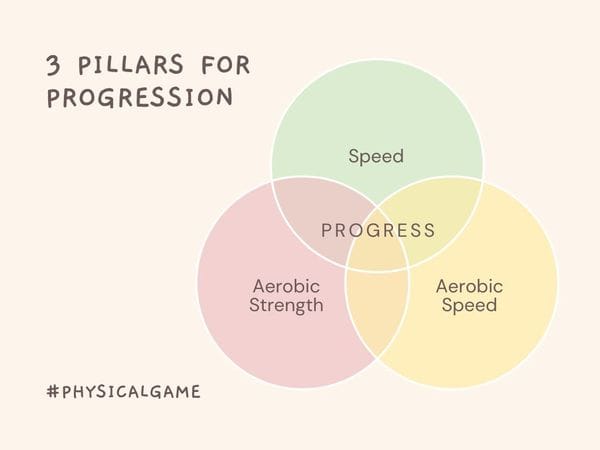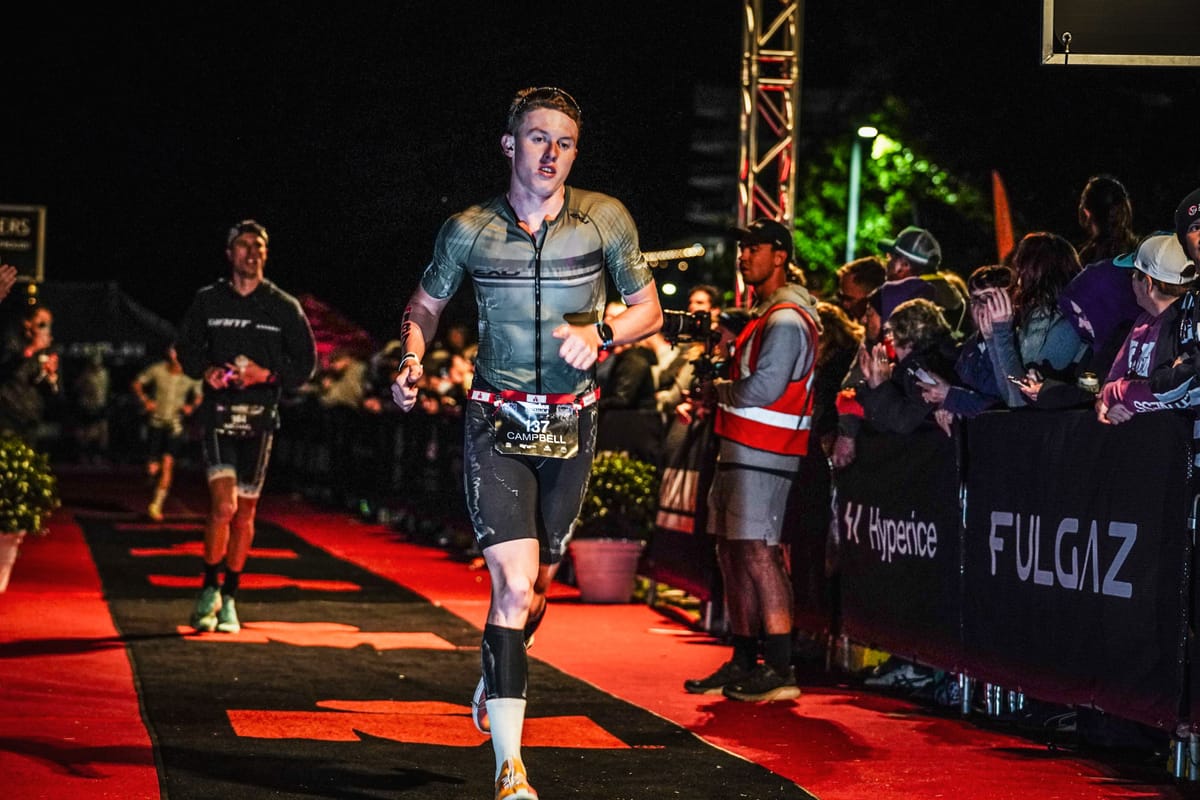Aerobic speed is a fundamental yet often under-appreciated component in the world of sports training, particularly in endurance sports like triathlon. This concept revolves around a simple but transformative idea: enhancing your ability to maintain a fast pace at an aerobic level, thereby elevating your overall top-end speed. The journey to mastering aerobic speed is rooted in disciplined training, focused on nurturing the aerobic system through a blend of long, steady workouts and strategic intensity management. This extensive article aims to provide you with insights and strategies on developing aerobic speed, ensuring that their training is not just about moving fast but doing so sustainably and efficiently.
From conducting regular aerobic threshold tests to integrating long runs with incremental speed development, the article delves into various methods to enhance aerobic speed. We'll explore the significance of measuring watts at the aerobic threshold in cycling and the importance of developing swim-based aerobic speed through longer, rhythmic repetitions. Understanding the impact of aerobic power on sustainable speed, the role of lactate tolerance in performance, and the concept of fallback pace as a measure of aerobic conditioning are also crucial elements in this discussion.
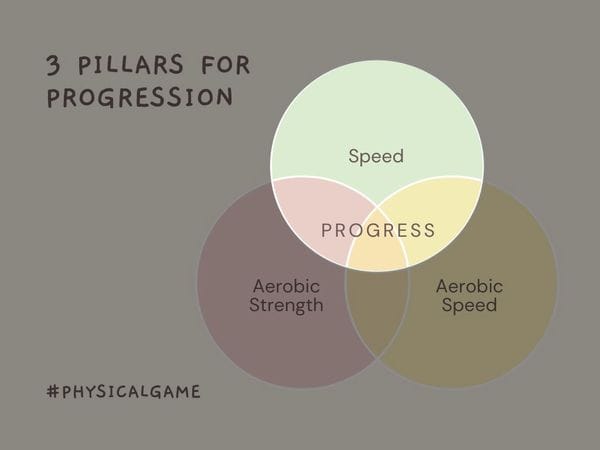
The Art of Mastering Speed
Speed in sport is a multifaceted element, crucial for peak performance across the various triathlon disciplines. Developing speed is more than just quick movements; it's about integrating several components that collectively enhance an your speed in a sustainable, functional way. This article delves into the nuances of speed development, emphasising its practical application, innovative methods for enhancing speed, the strategic use of speed gears, and the overall importance of speed in an athlete's training regime.
Functionality: Ensuring Speed Serves a Purpose
Evaluating Speed's Role in Your Sport
Athletes need to critically assess whether their speed aligns with their sport's requirements. It's vital to develop speed that is not just impressive in numbers but is practical and applicable to the specific demands of their sport. This functional approach to speed ensures that athletes are not merely chasing unattainable speeds that do not translate into actual performance improvements.
Overspeed: Enhancing Speed Creatively
Diverse Methods for Speed Increment
Innovative training techniques are key to developing overspeed effectively and safely:
- Utilising swimming aids like wetsuits and paddles can simulate an overspeed environment in the water.
- Running downhill provides an opportunity to increase leg turnover rate without overwhelming the body's lactate tolerance.
- Motor-pacing in cycling offers a controlled environment to push speed limits.
These methods allow athletes to experience and adapt to higher speeds, enhancing their race-day performance.
Speed Gears: Mastering Varied Intensities
Tailoring Speed to Training Needs
Understanding and utilizing different speed gears at various intensities is a crucial skill. This knowledge allows athletes to push their physical boundaries in a structured and controlled manner, enabling them to adapt to different racing scenarios and demands.
The Concept of Relaxing into Speed
Harmonizing Effort and Relaxation
Learning the art of relaxing while maintaining speed is a game-changer. It's a misconception that higher speed always requires more tension. In fact, relaxing the muscles, especially facial muscles, during speed work can conserve energy and improve endurance.
Red Zone Training: Balancing Intensity
Managing Threshold Training Wisely
While training at or near the anaerobic threshold (FTP) is beneficial, overdoing it can be counterproductive. Training smartly in this zone means touching the threshold without causing excessive fatigue, fostering a gradual and sustainable improvement in speed.
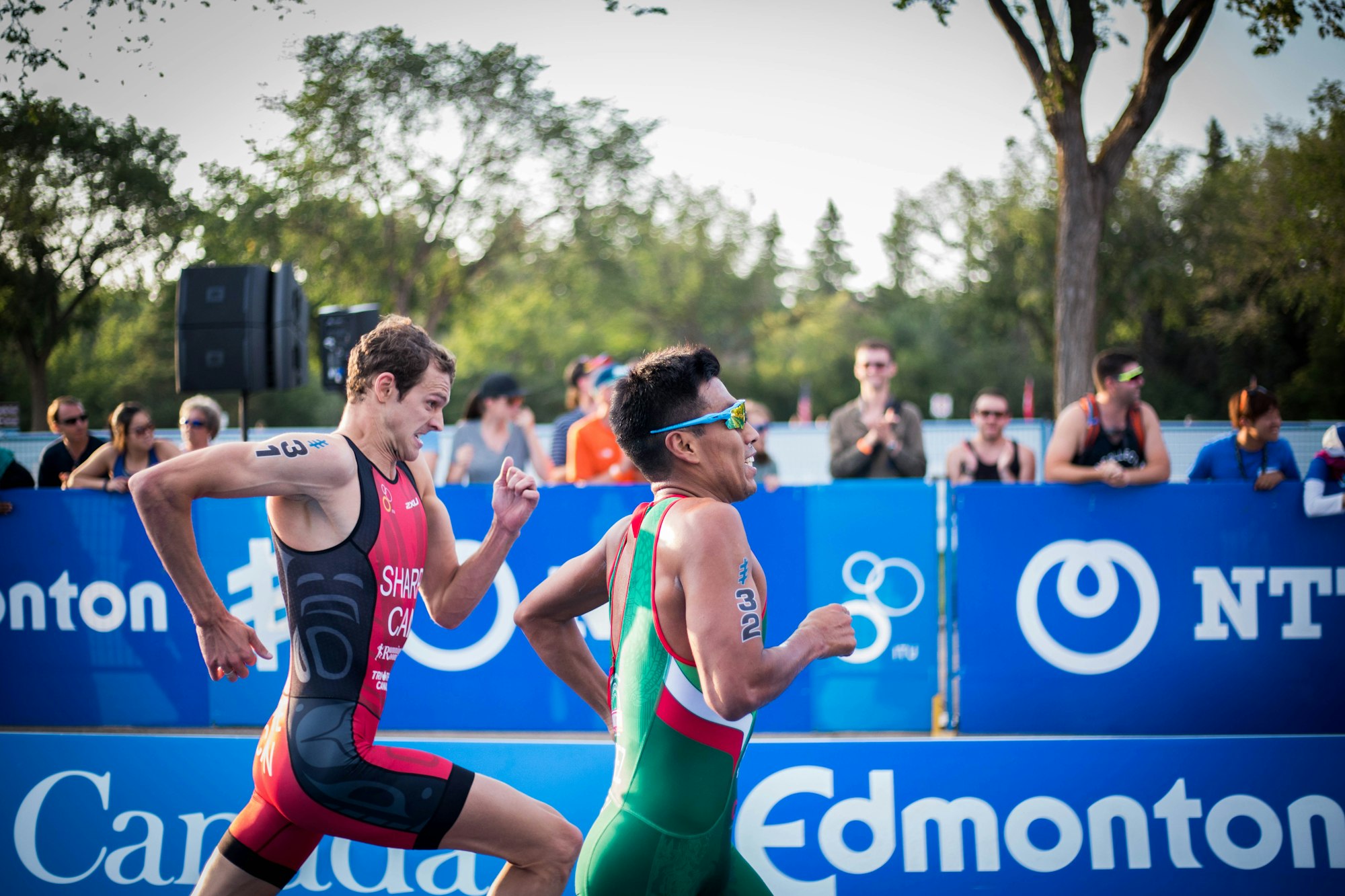
Cadence: A Crucial Component of Speed
Understanding Cadence's Role in Speed Development
The cadence, or the rate at which an athlete completes a repetitive motion, is vital for speed development. It challenges the aerobic system, aiding in the development of aerobic power, and conditioning the body for automatic responses during high-speed scenarios.
The Interplay of Form and Speed
Efficiency as the Foundation of Speed
Effective speed is not just about the act itself but how it's executed. Good form, characterized by efficiency and smooth movements, is a prerequisite for achieving high speed. Whether it's the streamlined position in swimming, the power transfer in cycling, or the optimal lean in running, good form is essential.
Recovery Speed: Measuring Training Effectiveness
Indicators of Good Form and Endurance
The rate and quality of recovery between speed sessions are indicative of an athlete's form and endurance. Developing a recovery strategy that includes a medium pace, rather than just a slow pace, can enhance aerobic capacity and improve overall speed endurance.
Discerning Training: Avoiding Unproductive Workouts
Identifying and Eliminating Inefficient Training
Athletes should be wary of incorporating too many 'gray area' sessions that don't effectively contribute to threshold stimulation or aerobic capacity enhancement. These sessions can lead to stagnation and hinder speed development.
Speed Work: The Strategic Use in Training
Balancing Speed in the Training Regimen
Speed work should be incorporated into training like seasoning in cooking – used judiciously to enhance overall training flavor. Overuse can overwhelm an athlete's ability to adapt, while the right amount can significantly improve functional speed and performance.
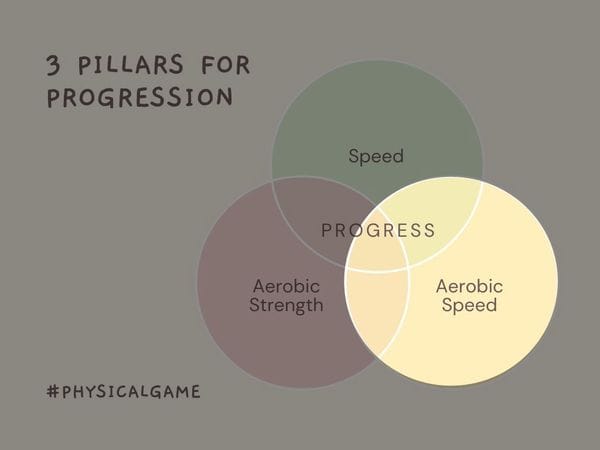
Aerobic speed is a critical aspect of an athlete’s toolkit, especially in endurance sports. It's a simple yet profound principle: the faster you can move at an aerobic level, the higher your top-end speed potential. This long-term development of aerobic speed hinges on the disciplined nurturing of the aerobic system through consistent, steady training. Here's a deep dive into the strategies and benefits of enhancing aerobic speed.
Utilising Measured Distances for Aerobic Threshold Testing
Regular Time Trials
Conducting regular time trials, like a 5km run, at your aerobic threshold (AT1) speed is an effective way to track and improve your aerobic speed. This consistent testing helps in gauging progress and making necessary adjustments to your training plan.
Implementing Checkpoints in Long Runs
Incremental Speed Development
Incorporating checkpoints during long runs, where you maintain a consistent heart rate while gradually increasing speed, can significantly boost your aerobic capacity. This method not only enhances your endurance but also builds confidence as you witness improvements in your form and speed.
Measuring Watts at Aerobic Threshold
Power Tracking on the Bike
While many athletes are adept at measuring Functional Threshold Power (FTP), focusing on AT1 power (in watts) can yield substantial benefits. The ability to ride faster at AT1 wattage enhances your overall aerobic engine, a key component in sustaining higher speeds.
Developing Swim-Based Aerobic Speed
Focus on Longer Repetitions
For swimming, prioritize longer repetitions like 400m, 600m, and 800m sets, concentrating on rhythm and relaxation. This approach helps in building sustainable water speed, as tension in the water significantly hinders movement.
Training for Sustainability: Aerobic Speed Across Disciplines
The Importance of Sustainable Training
Training for aerobic speed across different sports disciplines is crucial for sustainable performance. As your aerobic capacity develops, so does your ability to maintain higher training paces over longer periods.
Enhancing Lactate Tolerance
Sustainable Speed and Lactate Levels
Improving lactate tolerance can have a dramatic impact on sustainable speed. For example, a reduction in 5km times can be achieved by increasing lactate tolerance, leading to more sustainable speeds at higher intensities.

Misinterpretation of Speed at the Elite Level
Understanding the Role of Aerobic Power
Elite athletes’ speed is often a product of robust aerobic power, not just isolated speed sessions. Recognising this connection is vital for understanding how top athletes maintain high speeds over extended periods.
The Significance of Aerobic Power
Observing High-Speed Aerobic Capacity
Athletes capable of running fast kilometers at relatively aerobic heart rates exemplify the true measure of aerobic power. This power is fundamental for both beginners and world champions, serving as a gauge of an athlete’s ability to perform sustainably.
Fallback Pace: A Measure of Aerobic Conditioning
Assessing Aerobic Speed through Fallback Pace
Fallback pace, the speed you naturally revert to when not feeling optimal, is an essential aspect of training. A well-conditioned aerobic system with good speed ensures a reliable fallback pace, crucial for maintaining performance during challenging moments.
The Impact of Focused Aerobic Speed Training
Reaping the Rewards of Consistent Training
Dedication to developing aerobic speed yields noticeable improvements in performance, often surprising competitors and observers alike. This principle of input/output reflects the fundamental physical law: the effort you invest in training directly translates into the results you achieve.
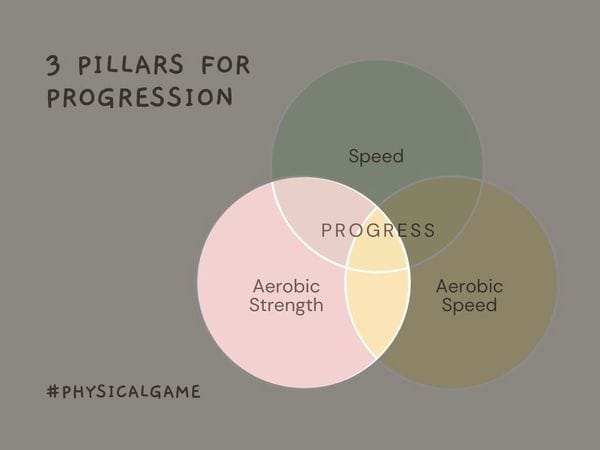
Aerobic Strength: The Key to Endurance
Developing aerobic strength is not just about enhancing endurance; it's about creating a well-rounded athlete capable of sustaining high performance under challenging conditions. This strength is built through training that emphasises technique, efficient use of natural resistance, balanced training environments, and an understanding of the body's responses. By focusing on these key areas, athletes can build a solid foundation of aerobic strength that will serve them well in both training and competitive environments.
Utilising Gravity for Better Technique
The Role of Gravity in Training
Embracing gravity's resistance, especially when climbing slowly in cycling or running uphill, can significantly improve your technique. This approach builds strength efficiently, as your body learns to integrate and utilise the technique under aerobic conditions, forming a solid foundation for your performances.
Wattage and Climbing Efficiency
Optimising Climbing for Aerobic Strength
Working at higher wattages on climbs can be achieved at lower oxygen costs. Training in the AT1 range on climbs builds strength without overtaxing the aerobic system, a strategy that prevents the damage often caused by excessive threshold efforts on flat terrains.
Swim Strength and Technique
Building Strength in Swimming
Swimming with flat paddles can be a litmus test for your stroke technique. Adjustments may be necessary, especially for non-elite swimmers, to develop a strong catch and pull through in the water. Using a pull buoy and paddles or wetsuit shorts in the pool can effectively mimic race conditions and enhance swim strength.
Embracing Hill Training
Hills as a Foundation for Strength
Hill training, both in running and cycling, is a potent tool for developing aerobic strength. The natural resistance and varied terrain of hills can significantly improve your endurance and efficiency, laying a strong foundation for speed development.

The Benefits of Trail Running
Trail Running for Balanced Strength
Running on trails offers unique benefits, particularly in developing balance and tendon strength. This type of training often yields more significant benefits than equivalent mileage on the road, reflecting the value of varied surfaces for an athlete’s development.
Understanding Load vs. Numbers
Training Beyond Data
Training effectively involves focusing on the physical load and bodily feedback rather than solely on numerical data. Understanding and responding to your body's signals can lead to more effective strength building than simply chasing numbers on a screen.
Enhancing Aerobic Function
Strength as a Measure of Aerobic Capability
Aerobic function is intrinsically linked to strength. Building aerobic strength not only enhances endurance but also sets the stage for developing great aerobic speed. This strength is fostered through consistent aerobic movement patterns.
Backend Strength for Race Endurance
Sustaining Performance in Races
The ability to maintain form and speed towards the end of a race relies heavily on foundational strength, particularly in cycling. Addressing a lack of foundational strength can significantly improve your running performance in triathlons.
Injury Prevention through Aerobic Conditioning
Aerobic Strength as a Shield Against Injury
Athletes who have well-developed aerobic strength are generally less prone to injuries. If injury is a recurring issue, it's often a sign of inadequate aerobic strength in your training regimen. Addressing this can lead to more robust and resilient athletic performance.



